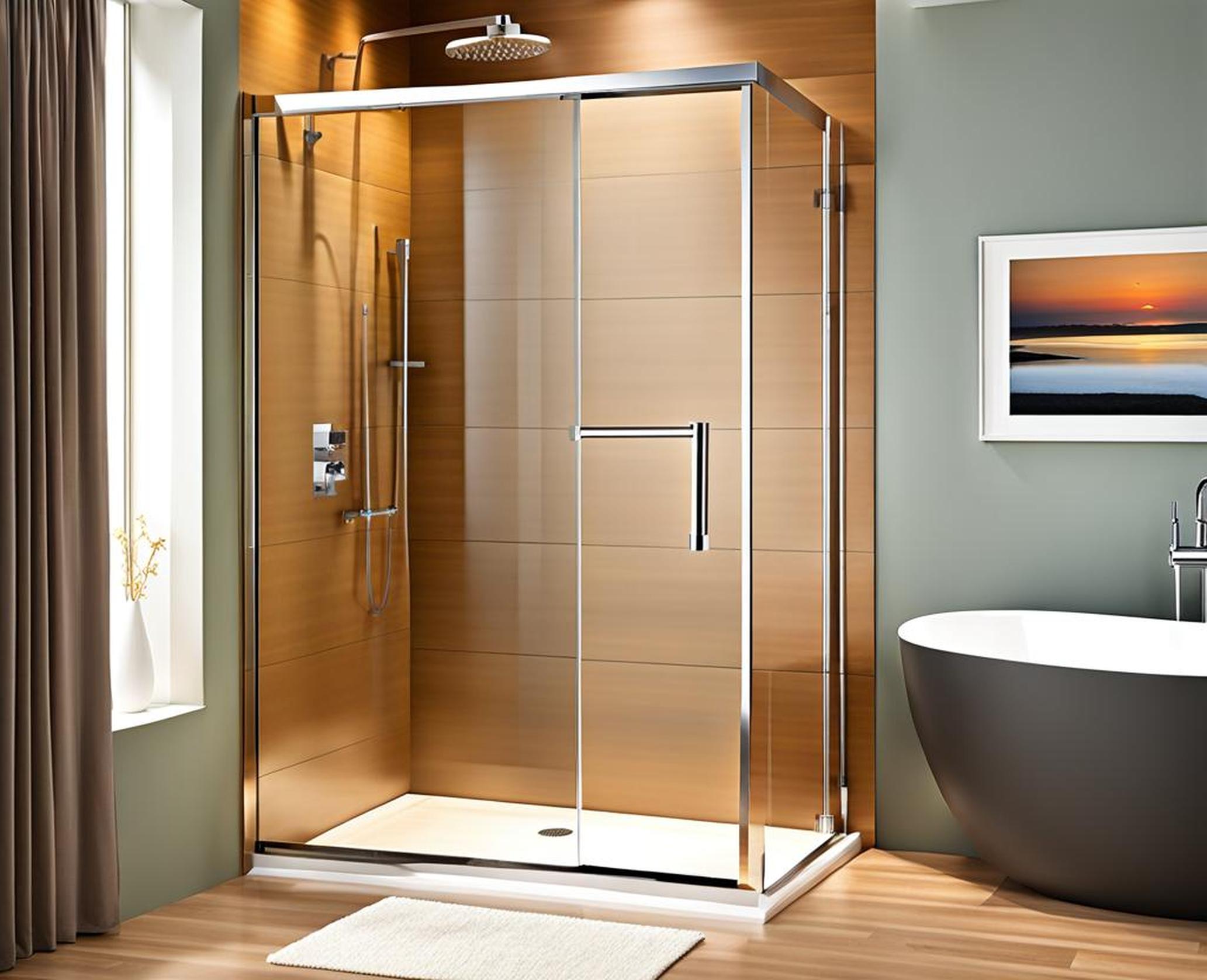When designing or remodeling a bathroom, determining the right size for your shower area is an important consideration. Specifically, choosing shower doors that meet minimum width requirements can make all the difference in comfort, accessibility, and containing water in the enclosure.
We’ll also overview standard door sheet sizes and suggested overall shower dimensions for a spacious feel. Let’s explore this crucial measurement together!
What is Considered the Minimum Shower Door Width?
The most common minimum width for a shower door is 30 inches, which converts to approximately 76 or 80 centimeters. This 30-inch clearance allows most people to comfortably enter and exit the shower enclosure. Building codes and manufacturers generally recommend this as the absolute minimum width for functional shower doors.
How Minimum Widths Vary by Door Type
This 30-inch minimum clearance is usually divided up between two sliding shower door sheets or one hinged shower door and an adjoining fixed panel. Sliding doors specifically require a narrower opening width than hinged doors to operate properly. Here’s how it typically breaks down:
- Two sliding door sheets – Each around 20-24 inches wide
- One hinged door + fixed panel – Hinged door approx. 24 inches wide
Building Code Requirements
For residential bathrooms, local building codes generally adhere to the standard 30-inch minimum. However, stricter minimums apply for ADA-compliant accessible shower design, which range from 32-36 inches depending on door type.
Why is There a Minimum Width for Shower Doors?
You may be wondering, why is it necessary to have a minimum width for shower doors? What issues could arise with excessively narrow doors?

Preventing Water Leakage
A major reason behind minimum width regulations is preventing water from escaping the shower enclosure, leading to potential leaks and moisture damage. Excessively narrow shower door openings increase the risks of water splashing or spraying outside of the interior space.
The 30-inch minimum optimally contains water while still allowing comfortable passage into and out of the area. At this width or wider, the glass shower door panels or fixed sides block splash back to keep water inside.
Ensuring User Comfort
In addition to controlling water, minimum shower door widths aim to provide a comfortable user experience. Smaller widths often feel too cramped and restrictive, limiting mobility for showering tasks. They can make interior spaces seem dark and claustrophobic as well.
The standard 30-inch opening gives most individuals enough room to move freely when lathering, shaving legs, shampooing hair, and reaching for amenities inside. It prevents uncomfortable scraping against doors or walls that narrower widths might cause.
Recommended Total Shower Dimensions
While abiding by the 30-inch shower door minimum, for optimal comfort and functionality, larger complete shower dimensions are advisable. Here are suggested sizes to consider:
Square Shower Areas
For a spacious square or near-square shower enclosure, building codes recommend a minimum interior space of 36 inches (90 cm) in both directions. This provides ample area for installing desired showerheads, benches, and niches without limiting mobility.
Rectangular Shower Stalls
If designing an elongated rectangular shower, a popular size is 30 inches by 60 inches — meeting minimum width while offering comfortable depth. The longer side along the back is deeper for a more spacious feel, while the 30-inch width allows easy access through doors and clearance for elbow room.
Standard Shower Door Sizes
When budgeting for a new shower project or shopping replacement doors, you’ll need to know common shower door sheet and fixed panel dimensions as well. These widths, accounting for two door sheets total, make up the minimum 30-inch opening.
Sliding/Hinged Door Sheets
On average, individual sliding and hinged shower door sheets measure 20-24 inches (50-60 cm) across. With two door sheets, this allows the recommended minimum 30-inch walk-through clearance when aligned evenly.
Fixed Panel Dimensions
Fixed non-moving shower panels range in width depending on the total size of the area. They may span longer lengths to enclose spacious showers. The fixed panel could be the full 30-inch minimum alone if paired with a hinged door for access.
Determining the ideal minimum shower door width for your home’s bathroom and abilities is key. The standard recommendation comes in at 30 inches (76 cm) total — this comfortably fits most people and contains water splashing.
Remember to divide this total minimum between two sliding doors or one hinged door and adjoining fixed glass panel during planning. And for maximum enjoyment, consider going beyond the bare minimum with spacious 36 x 36 inch or 30 x 60 inch shower enclosures.
